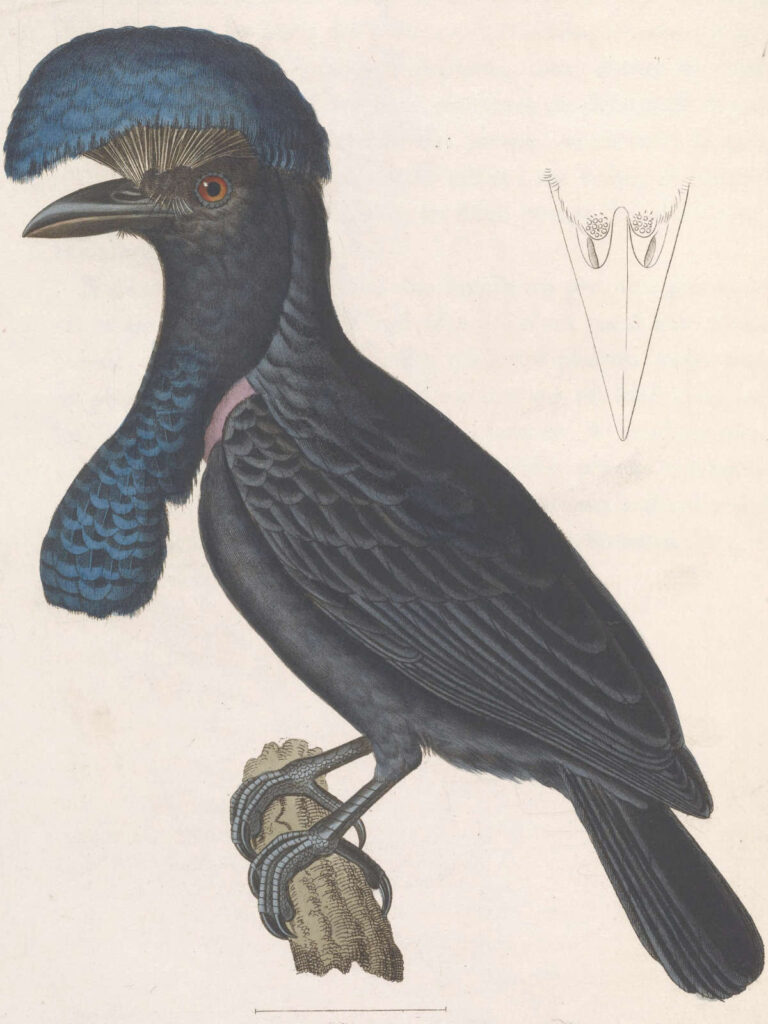Last Reviewed and Updated on January 20, 2023
Have you ever heard of umbrellabirds? These fascinating creatures are native to tropical forests in South and Central America and are known for their impressive head feather shapes and sizes, among a few other things. Let’s explore some extraordinary facts about umbrellabirds that you may not have known before!

About Umbrellabirds
The Umbrellabird is a group of birds found in the rainforests of Central and South America. They are known for the distinctive feathers on their head and their wattles.
There are 3 known living species of umbrellabirds;
- Long-wattled umbrellabird
- Amazonian umbrellabird
- Bare-necked umbrellabird
They are relatively large birds, with adult body lengths ranging from 14 to 21.5 inches / 35 to 55 cm.
Umbrellabirds are almost entirely black, with some variations between the species.
The diet of Umbrellabirds mainly consists of fruits and insects. They are known to be opportunistic feeders and eat a wide variety of fruits, insects, and other small animals, even lizards.
Umbrellabirds find a mate through courtship displays, where the male puffs out his wattle to attract a female. After mating, the female builds a nest and one or occasionally two eggs which she will incubate for about a month. Once the chick hatches, the mother will feed it for a few months until the young bird is ready to leave the nest.
Facts About Umbrellabirds
Now you know all the basic information about this group of birds. But there are quite a few unique traits these birds have. Read on to learn so,e of the most interesting facts about umbrellabirds.
1. They got their name because of the crests on top of their heads
Umbrellabirds have a very distinct crest on their heads that vaguely resembles an umbrella; it is the shape of this crest that is responsible for the common name given to these birds.
2. They aren’t good flyers
Umbrellabirds can fly, but they aren’t good at it. Their flying is made difficult by their large size. They can fly short distances but are slow and clunky in the air. Most of the time, they move around by hopping between branches.
3. All umbrellabirds have an inflatable wattle on their necks
The wattle is a distinctive growth on their necks. They can inflate this growth to amplify their loud booming calls.
Because of their loud and deep calls, they were also given the name ueramimbé (piper-bird).
4. Wheen sleeping, they resemble a pile of feathers
When they sleep, they curl up, assuming a position where neither their feet nor their heads are visible; those are tucked under their wings and crest. They look like a pile of black feathers.
5. This bird is an important pollinator
When talking about pollinators, bees are the ones that usually pop to mind, but many birds and other animals are important pollinators as well. Umbrellabirds are one of those. As they feed on seeds and fruit (where they ingest the seed), they distribute the seeds across the forest with their droppings.
6. Umbrellabirds are altitudinal migratory birds
They aren’t migratory in the classical sense; they don’t travel south and north across the land. They do migrate up and down the mountains.
7. The Long-wattled umbrellabird’s wattle is very long and covered with feathers
Male long-watted umbrellabirds have a large throat wattle of feathers. They can control the length of the wattle, and they will retract it in flight.
8. The male bare-necked umbrellabird has a bare red wattle
Male bare-necked umbrellabirds are easy to spot, as the wattles, under their necks are bare and brightly red.
9. Amazonian umbrellabird is the largest of the three

Out of the three species of umbrellabirds, the Amazonian umbrellabird is the largest one. The male of the species is noticeably larger than the female; the male has a length of 19 to 21.7 inches / 48 to 55 centimeters.
